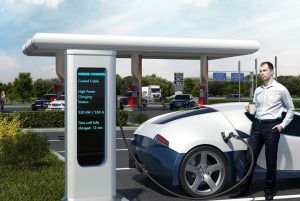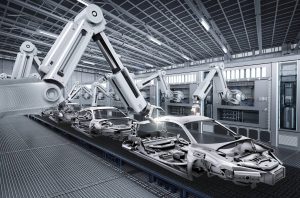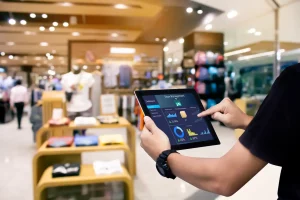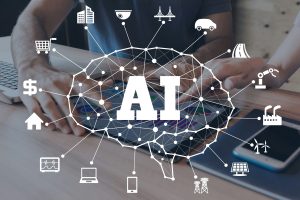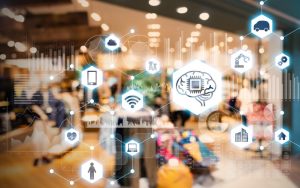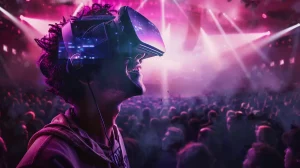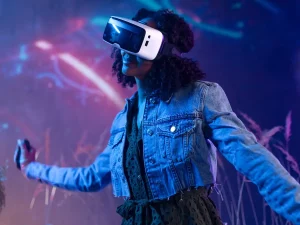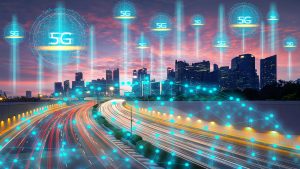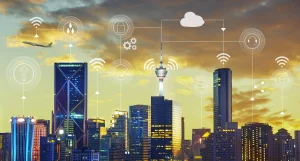
In recent years, the rapid evolution of technology has fundamentally transformed nearly every aspect of our lives. Among the most significant changes is its impact on education. From smart classrooms to digital resources, technology in education has shifted the way students learn and teachers teach. The integration of technology is not just an enhancement but a revolutionary shift in how educational content is delivered and consumed. This article will explore the benefits of technology in education, provide real-world examples, and examine case studies to highlight its influence.
Table of Contents:
- Introduction to Technology in Education
- Benefits of Technology in Education
-
- Personalized Learning
-
- Increased Accessibility
-
- Enhanced Engagement
-
- Collaboration and Communication
-
- Efficiency in Administrative Tasks
-
- Examples of Technology in Education
- Case Studies Highlighting Impact
-
- Smart Classrooms in Finland
-
- Khan Academy’s Global Reach
-
- Remote Learning During the COVID-19 Pandemic
-
- Challenges and Considerations
- Conclusion
1. Introduction to Technology in Education
Technology has become a critical part of modern education systems, facilitating more engaging, accessible, and efficient learning experiences. From e-books to online learning platforms and artificial intelligence (AI) in education, technology offers a variety of tools that empower both teachers and students. Traditional classrooms, bound by chalkboards and textbooks, have evolved into dynamic learning environments where students interact with multimedia content, simulations, and collaborative tools.
The concept of “Technology in Education” refers to the use of tools like computers, mobile devices, software applications, and the internet to enhance learning processes. It covers everything from virtual classrooms to digital content delivery and data management systems. By integrating technology, education can become more inclusive, flexible, and tailored to the needs of individual learners.
2. Benefits of Technology in Education
1. Personalized Learning
One of the most profound benefits of technology in education is the ability to provide personalized learning experiences. In traditional classrooms, educators often have difficulty catering to the individual needs of each student due to time constraints and class sizes. With the help of technology, this challenge is mitigated.
Personalized learning platforms use data analytics and AI to assess students’ strengths and weaknesses. Based on this data, students receive tailored content that matches their learning pace and style. Tools like adaptive learning platforms, such as DreamBox or Coursera, dynamically adjust the content to suit each learner’s progress. This helps students stay engaged and ensures that they are neither bored nor overwhelmed by the pace of the lessons.
2. Increased Accessibility
Technology has drastically improved access to education for people across the globe. E-learning platforms like Udemy and edX offer courses on various subjects, allowing anyone with an internet connection to learn from world-class instructors, regardless of geographic location.
Moreover, technology addresses the challenges faced by learners with disabilities. Tools like screen readers, voice recognition software, and audiobooks make learning accessible for students with visual, auditory, or mobility impairments. These technological advancements democratize education, ensuring that students who may have previously been marginalized can now access educational resources.
3. Enhanced Engagement
The use of multimedia, such as videos, interactive quizzes, simulations, and virtual reality (VR), makes learning more engaging. Traditional teaching methods often rely on lectures, which may not suit all learning styles. Some students may find it hard to concentrate or fully grasp complex concepts from verbal instruction alone. With multimedia tools, students can visualize complex ideas, participate in interactive activities, and engage more deeply with the subject matter.
For instance, VR can simulate real-world environments for subjects like history, geography, or even medical training. Students can take virtual field trips to ancient civilizations or perform simulated surgeries in a controlled virtual environment, making learning both exciting and immersive.
4. Collaboration and Communication
Technology facilitates collaboration both inside and outside the classroom. Platforms like Google Classroom, Microsoft Teams, and Zoom have transformed the way students work together on projects, interact with teachers, and share ideas. Group work, peer reviews, and real-time discussions have become more efficient, even in remote settings.
In addition, communication between teachers and students has become more seamless. Teachers can provide instant feedback through online platforms, and students can ask questions without waiting for office hours. This real-time communication enhances the overall learning experience and ensures that students stay on track.
5. Efficiency in Administrative Tasks
Technology also improves the efficiency of administrative tasks in educational institutions. From grading systems to attendance tracking, many processes that used to require significant time and effort are now streamlined. Learning Management Systems (LMS) such as Blackboard and Moodle automate grading, attendance, and assignment submissions, freeing up time for educators to focus on teaching rather than paperwork.
These systems also generate valuable data that can be used to monitor student performance, identify learning gaps, and implement interventions when necessary.
3. Examples of Technology in Education
1. Smart Classrooms
A smart classroom integrates various technological tools such as interactive whiteboards, projectors, tablets, and digital textbooks to create a collaborative and interactive learning environment. Smart classrooms can host video lectures from remote instructors, allow students to take quizzes in real-time, and facilitate collaborative projects.
In China, the use of AI-powered cameras in smart classrooms monitors student engagement, providing feedback to teachers on how students respond to lessons. This allows teachers to adjust their teaching methods based on real-time data, enhancing learning outcomes.
2. E-Learning Platforms
Platforms like Khan Academy, Coursera, and Udemy have made high-quality education accessible to millions of learners worldwide. These platforms offer courses in various subjects, from basic math to advanced machine learning, enabling students to learn at their own pace. Khan Academy, for example, provides free lessons in over 36 languages, making education more inclusive for students in underprivileged regions.
3. Virtual Reality in Medical Training
Virtual reality is increasingly being used in medical schools to train future doctors. Through VR simulations, students can practice surgeries or diagnose diseases without the need for real patients. These simulations provide a safe environment where students can make mistakes and learn from them, ensuring that they are better prepared for real-world medical situations.
4. Case Studies Highlighting Impact
1. Smart Classrooms in Finland
Finland, known for its exemplary education system, has embraced technology to further enhance learning. Many Finnish schools have implemented smart classrooms, where technology like interactive whiteboards, 3D printers, and digital assessment tools play a significant role in education.
Research conducted in Finland shows that students in smart classrooms exhibit higher engagement levels and achieve better learning outcomes than those in traditional classrooms. Teachers also report that technology helps them monitor student progress more effectively and cater to individual learning needs.
2. Khan Academy’s Global Reach
Khan Academy, a non-profit educational platform, has become a global leader in e-learning. Founded by Salman Khan, the platform initially started as a series of YouTube videos explaining math concepts but has since grown into a full-fledged learning platform offering thousands of lessons in various subjects.
A 2018 study by the RAND Corporation found that students using Khan Academy showed improved test scores, particularly in mathematics. Moreover, the platform’s focus on providing free access has opened educational opportunities for underserved communities worldwide.
3. Remote Learning During the COVID-19 Pandemic
The COVID-19 pandemic forced educational institutions worldwide to adopt remote learning. Platforms like Zoom, Google Meet, and Microsoft Teams became essential tools for virtual classrooms. While the shift was initially challenging, it highlighted the potential of technology in maintaining the continuity of education.
A case study conducted by UNESCO in 2021 revealed that remote learning helped mitigate learning loss during the pandemic. Although it was not without challenges, particularly for students in low-income areas with limited internet access, the pandemic underscored the importance of investing in digital infrastructure for education.
5. Challenges and Considerations
While the benefits of technology in education are undeniable, there are also challenges that need to be addressed.
- Digital Divide: Access to technology is still uneven, particularly in low-income regions. Students without access to reliable internet or digital devices are at a significant disadvantage, widening the gap between the privileged and the underprivileged.
- Overreliance on Technology: While technology enhances learning, overreliance on it can reduce critical thinking and problem-solving skills. It’s essential to balance technology use with traditional learning methods to foster well-rounded learners.
- Data Privacy Concerns: The collection of student data for personalized learning raises concerns about data privacy. Educational institutions must ensure that data is handled responsibly and securely.
- Teacher Training: Not all educators are equipped to use technology effectively. Continuous professional development and training are necessary to ensure that teachers can leverage technology to its fullest potential.
Conclusion
Technology in education has brought about a paradigm shift in the way knowledge is disseminated, acquired, and retained. From personalized learning experiences to enhanced accessibility and engagement, the benefits of integrating technology into education are vast. However, challenges such as the digital divide, privacy concerns, and the need for proper teacher training must be addressed to ensure that all students benefit equally from these advancements.
As technology continues to evolve, so will its applications in education. Whether through virtual reality simulations, AI-driven learning platforms, or smart classrooms, the future of education looks more dynamic and inclusive than ever before. The key is to leverage these tools thoughtfully and ensure that they enhance the learning experience for every student, everywhere.








